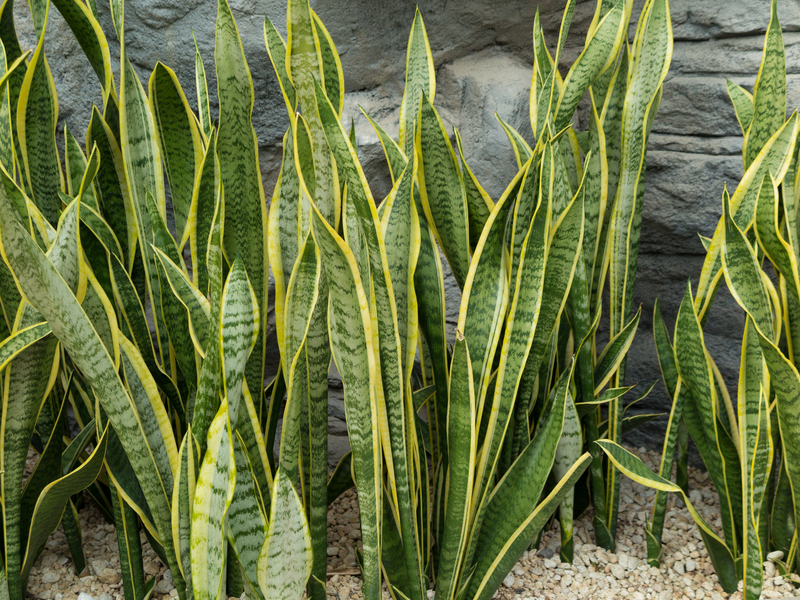How to Design a Garden You Can Take With You: A Complete Guide
In today's fast-paced world, many people are constantly moving--whether it's changing homes, upgrading rentals, traveling in a van, or even working nomadically from different locations. With these ever-changing landscapes, the dream of cultivating a vibrant, green space doesn't have to fade. Designing a garden you can take with you is both achievable and incredibly rewarding. This comprehensive guide will show you exactly how to create a portable garden, keep your plants thriving, and infuse greenery into every place you call home.
Why Choose a Portable Garden?
Portable gardens are perfect for:
- Renters who can't make permanent changes to their space
- Nomadic travelers or van-lifers seeking connection to nature
- Urban dwellers with limited outdoor access
- People who frequently move for work or lifestyle reasons
By designing moveable gardens, you ensure all the time, effort, and love you put into your plants goes with you, wherever you go.

Understanding the Essentials of a Take-Along Garden Design
Think Small: The Key to Mobility
If you're serious about a garden you can transport, size and weight become critical considerations. Container gardening is the foundation of any garden on the go. By using pots, planters, and modular beds, you'll create a system that can be easily picked up, packed, and relocated.
Choose the Right Containers
Not all containers are created equal when designing a garden you can take anywhere. Consider these features:
- Materials: Choose lightweight (plastic, resin, fabric grow bags) over heavy (ceramic, terracotta, concrete).
- Drainage: Ensure good drainage to prevent root rot and allow for easy watering wherever you are.
- Sizes: Select a range of shapes, but keep sizes manageable for one person to easily handle.
- Handles/Wheels: Look for containers with handles or built-in wheels to increase portability.
Using stackable or collapsible containers further maximizes flexibility and saves space during moves.
Soil and Substrate Choices
Good soil is essential for a healthy garden, portable or otherwise. Use high-quality potting mixes that are lightweight and retain moisture. Avoid heavy garden soils; instead, opt for mixes custom-designed for containers, and consider adding perlite or coco coir to keep things extra light and airy.
Choosing the Best Plants for a Movable Garden
Not all plants are equally suited for a take-along garden. Focus on species that adapt well to the stress of movement, fluctuating conditions, and potential changes in light and humidity.
Best Plant Types
- Herbs: Basil, mint, chives, parsley, oregano. These are compact, useful, and forgiving.
- Dwarf vegetables: Tomatoes (especially 'Tiny Tim' or patio varieties), peppers, lettuce, radishes, and small bean plants.
- Leafy greens: Spinach, arugula, kale, Swiss chard
- Succulents and cacti: Exceptionally portable, low-maintenance, and resistant to drought.
- Ornamentals: Pansies, marigolds, petunias, mini ferns, and trailing ivy.
- Houseplants: Snake plant, pothos, spider plant, philodendron
Remember, compact varieties are best. Look for cultivars labeled 'dwarf', 'miniature', or 'patio'.
Plant Care Essentials for Garden Mobility
- Water less but more thoroughly to encourage deeper root growth (making plants more resilient during moves)
- Rotate plants regularly to encourage even growth and avoid legginess or shock from sudden directional light changes
- Feed with balanced, slow-release fertilizers to reduce maintenance and mess during transport
Creative Ideas for a Garden That Travels With You
Take-along gardens don't have to be limited to a few pots. Here are some inspired strategies:
- Vertical hanging gardens: Use pocket panels or modular stackable systems. These roll up or collapse for easy packing.
- Rolling carts and trolleys: Plant in trays or baskets that sit on multi-tier carts, which can be rolled from balcony to moving van to patio with minimal effort.
- Suitcase gardens: Repurpose vintage suitcases into quirky, portable planters. Punch drainage holes in the bottom and line with plastic for mobility and style.
- Pallet gardens: Grow herbs and shallow-rooted plants in lightweight, upcycled pallets. Lay flat for transport or stand upright for display.
- Window boxes: Perfect for renters; simply attach brackets to windowsills and bring them along to your next place.
Step-by-Step Guide to Designing Your Own Movable Garden
1. Assess Your Mobile Lifestyle
- How often do you move?
- How much space and weight can you realistically transport?
- Will your garden travel in a car, truck, or by hand?
- What's the light, temperature, and wind exposure like at each location?
Be realistic: portability almost always means some compromise on scale.
2. Plan Your Plants and Layout
Create a list of favorite portable garden plants and research their mature sizes. Sketch your intended container arrangements--vertical, horizontal, hanging, stacked--to maximize your available space.
3. Choose Your Containers
Select durable, lightweight containers with drainage. Remember, fabric grow bags can be squished, bent, and packed easily without breaking.
4. Prepare Your Soil Mix
Mix your preferred lightweight potting soil with organic matter and aerators. Pre-moisten to avoid mess during moving, but don't oversaturate.
5. Planting and Arranging
- Add a base layer of pebbles or broken pottery shards for drainage
- Fill to two-thirds with soil, position plants, then top up and firm the soil gently
- Water thoroughly and let drain before packing
6. Label Everything
Use waterproof markers or tags so you'll know what's what if containers get mixed up in transit.
7. Packing and Moving Your Garden
For local moves, transport containers upright and secure to prevent tipping. For longer relocations:
- Wrap containers with towels, bubble wrap, or newspaper to insulate roots and prevent soil spillage
- Remove standing water to lighten the load
- If possible, move early or late in the day to prevent heat shock
For van-lifers, allocate a shaded, ventilated corner of your vehicle for your live cargo!
Maintaining a Portable Garden: Top Tips for Thriving Plants on the Go
With frequent moves and changes in environment, you'll need a flexible but consistent care routine. Here's how to ensure your portable greenery flourishes:
Water Wisely
Self-watering containers are a lifesaver, particularly during unpredictable trips. Otherwise, water just before moves and avoid overwatering in case of temperature changes during transport.
Light Management
Your garden's light exposure will change with every move--sometimes even indoors to outdoors and vice versa. Choose adaptable plants and be ready to shuffle containers to the sunniest spot at each new location.
Protection from the Elements
Portable gardens can be vulnerable to drafts, hot cars, wind, and cold snaps. Prepare with:
- Movable row covers if growing edibles outside
- Lightweight frost blankets or shade cloths
- Temporary makeshift greenhouses using clear bins or domes
Observe and Respond
Frequent inspection helps catch and solve problems such as:
- Pest infestations (snails, aphids, spider mites): Wipe leaves, use safe sprays, or isolate affected plants
- Nutrient deficiencies: Feed with liquid fertilizer if you see pale leaves or stunted growth
- Shock from abrupt moves: Prune damaged foliage and give the garden a week to acclimate
Innovative Portable Garden Accessories
If you're serious about your travel-ready garden, consider some clever gear:
- Grow lights: Compact LED lights can be used in new, dimly-lit spaces
- Folding shelves or plant stands: Set up instant vertical gardening spaces inside hotels or new apartments
- Hydroponic kits: Dorm or van-friendly, soil-less options for super-portable salad greens
- Compost-in-a-bag: Small-scale worm composters for balcony or RV use
Take-Along Garden Inspiration: Stories from Real Travelers
Still not sure if a moveable garden is for you? Here are a few snapshots of how others have succeeded:
- Lena, a traveling nurse in Texas: Keeps two fabric grow bags of fresh herbs for cooking, which move with her between rental apartments every 6 months. "My basil made it to five different kitchens last year!"
- Ben, digital nomad in a Sprinter van: Uses magnetic pots for succulents and a hanging lettuce tower that fits in a van window. "It's amazing to always have something green, no matter where I wake up."
- Mira and Theo, urban apartment-hoppers: Rely on five wheeled carts of houseplants, which double as air purifiers and privacy screens. "Moving is so much less lonely when your green friends come too."
Benefits of a Take-With-You Garden
- Consistency: Familiar plants provide comfort and stability during life transitions.
- Fresh food and herbs: Grow your own snacks or salad ingredients, wherever you are.
- Improved air quality: Houseplants filter indoor air, reducing stress and boosting well-being.
- Customization: Quickly reconfigure your green space to fit your current lifestyle and home.

Common Challenges and How to Overcome Them
- Plants outgrowing containers: Prioritize dwarf varieties or trade/gift larger plants before moving.
- Soil spillage during transport: Top with moss or fabric, then wrap in plastic for longer journeys.
- Seasonal changes: Rotate plants between indoor and outdoor locations as needed; use portable grow lights in winter months.
- Water access on the road: Carry collapsible watering cans, water-saving granules, or use self-watering pots.
Final Thoughts: The Joy of a Garden You Can Take With You
Designing a garden you can take wherever you go is not only possible--it's an exciting way to stay connected to nature, even if your idea of "home" is always changing. Whether you dream of cooking from your own herb collection in every home, want the calming presence of greenery on your next adventure, or just need a hobby that moves with you, a portable garden is a smart, satisfying solution. Start small, think creatively, and enjoy the freedom that comes with a truly moveable oasis.
Now you know how to design a garden you can take with you--from the best portable garden containers and plant choices, to DIY tips and maintenance hacks. With a bit of planning and care, you can enjoy lush, living beauty wherever life leads you.